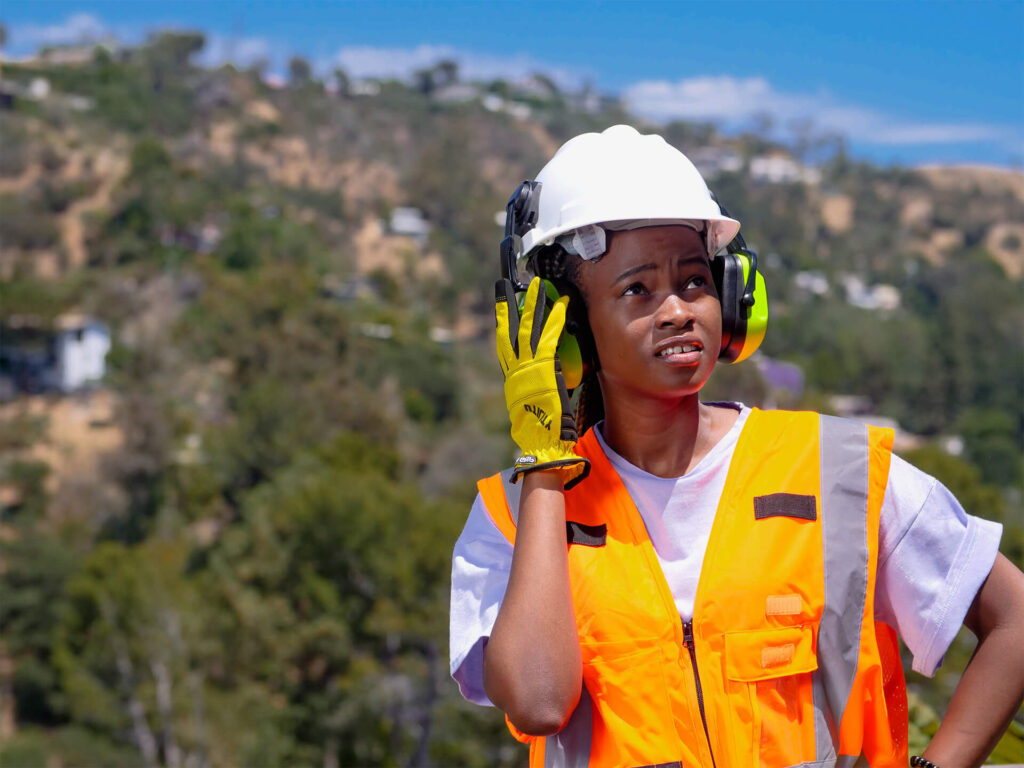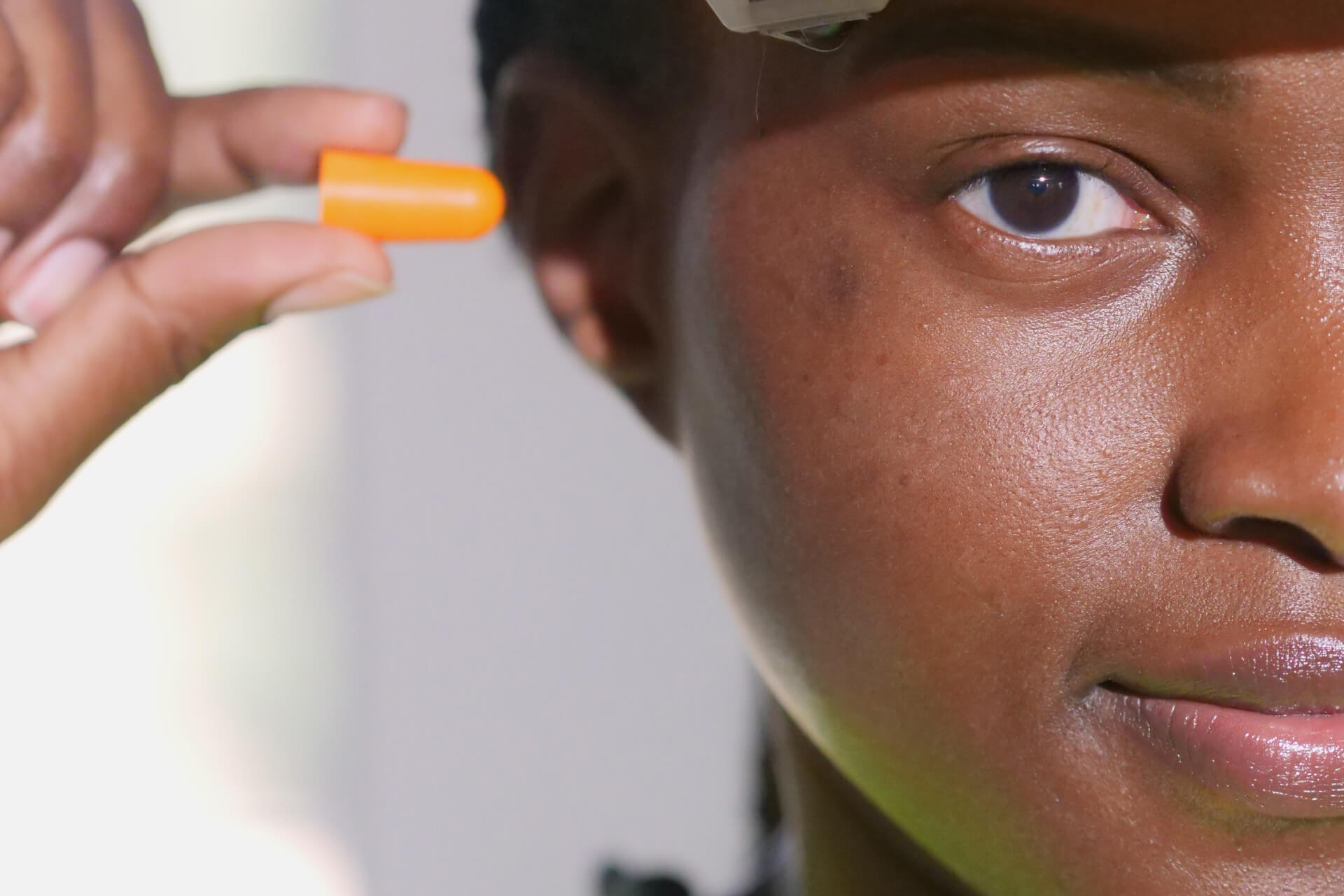Many workers in many different sectors throughout the world rely on hearing protection, and in fact, its usage is very important for preserving one’s hearing.
Hearing loss affects more than 900 million individuals worldwide, and many of these situations may have been avoided if proper hearing protection had been used. Loud noise can cause irreversible hearing loss, and it has a particularly negative impact on the sounds that aid speech comprehension.
The usage of hearing devices like earmuffs, earplugs, and others can help you avoid hearing loss, but only if they’re correctly fitted and worn.
Table of Contents
Ear Protectors Test – Factors that Cause Disparity
Since 1974, the EPA has enforced the use of the Noise Reduction Rating (NRR), which is a population-based laboratory assessment. However, there are several reasons why a Hearing Protection Device (HPD) fitted at the job site may not attain the same rating as the labeled estimations.
Users in the real world may not receive adequate instruction and may incorrectly fit the HPDs, and may modify HPDs for comfort (too loose or shallow insertion) or to hear what they need to hear (coworkers, warning signs, telephones, or communication radios, etc.)
Numerous occupational studies have compared the real-world performance of hearing protectors to the laboratory-generated attenuation ratings of those same earplugs since the release of the Occupational Safety and Health Administration (OSHA) Hearing Conservation Amendment1 in 1983.
Many studies have found that real-world attenuation for many employees is lower than the reported Noise Reduction Rating (NRR) and that the disparity has been blamed on a variety of factors, including the following:
- Inadequate training in the proper installation of hearing protection.
- Workers made a conscious decision to sacrifice attenuation in order to improve comfort.
- Earplugs that are too small for a particular worker.
- Hearing protection that does not fit the personal anatomy of the user’s ear.
Ear Protectors Test – How to Verify Attenuation?
Simply put, attenuation refers to the quantity of sound that you are decreasing. Assume you’re in a room with an ambient noise level of 85 decibels. An earplug with a 15dB rating will absorb 15dB of sound entering your ear canal. This reduces the noise level in your area to 70 decibels, which will not result in permanent hearing damage.
Instead of depending on population estimates of attenuation, many new methods now allow precise measurement. Four new systems on the market assess attenuation using quite different test methodologies, yet they all offer an accurate estimate of an earplug’s fit efficacy.
- Real-Ear Attenuation At Threshold: With and without earplugs, test signals are provided at the threshold. The difference between the two tests merely indicates how much protection the earplug provides.
- Real-Ear Attenuation At ThreReal-Ear Attenuation Above Threshold: As over, but test noises are provided above threshold using a simple loudness-balance procedure. Users can wear any earplugs, and there is no need for a quiet test booth.
- Microphone In Real-Ear: The users put on the test earplugs and listen to a loud noise sample. The amount of expected attenuation is then calculated using the software.
- In-Ear Dosimetry: A probe microphone is inserted into specially adapted earplugs. These microphones are linked to small dosimeters (one for each ear) that track real noise exposure while wearing hearing protection.
The first three approaches create a Personal Attenuation Rating (PAR) for a certain user and earplug at a specified time. This rating is unique to the individual, the ear, and the product. These techniques give a glimpse of an earplug’s noise-canceling effectiveness and a worker may re-fit the protection in a different way and walk into the hazardous sounds.
In-Ear Dosimetry, unlike the previous three approaches, is a measurement of real-world noise dosage over the course of an entire work shift. Throughout the workday, it provides real-time continual assessment and alerts the worker when the noise dose exceeds acceptable limits.
In short, the first three ways assess an earplug’s capabilities at any given time, while the fourth assesses a worker’s protected noise exposure (under the earplugs).
Ear Protectors Test – How to Develop the Personal Attenuation Rating
Fit testing of hearing protectors in the field has been available for several decades, though somewhat difficult to administer. But current fit test products now allow us to easily measure the attenuation of hearing protectors just as they are being used in the field, for better or worse.
Hearing protector effectiveness may be confirmed at an individual level, earplug by earplug and ear by ear, rather than utilizing population figures on the label.
Steps advised for workers who obtain a low PAR (Personal Attenuation Rating):
- Retrain them on correct insertion techniques
- Choose a new protector
In research, employees with poor attenuation results were asked to try a second pair of earplugs, usually a kind they had never used before, to see if a different protector actually made a difference. Employees who tried a second set of earplugs (without any extra training) generally had significant attenuation improvements, putting them closer to the rated attenuation. This demonstrates the validity of OSHA’s mandate that noise-exposed employees be provided with a “variety of adequate hearing protection.”
Some employees will never be able to obtain acceptable attenuation with a certain earplug model, and if that earplug is the only option available at the job site, some workers will be doomed to a life of constant protection. Providing a second option of acceptable earplugs increases the likelihood of more employees receiving proper protection.

Source: Pexels
Field Verification of Hearing Protection and Its Benefits
In the past, safety managers lacked the means to identify and rectify ill-fitting hearing protection on an individual basis. Field fit-testing, on the other hand, allows us to check the quantity of hearing protection provided and take corrective action with personnel who aren’t using it.
In addition to the time necessary for yearly audiometric testing, field verification methods necessitate additional testing time, however, the benefits to both the company and the employee are substantial:
- Attenuation testing is a documented method of determining whether or not a product is properly fitted.
- Employees can test a variety of earplugs before choosing the one that provides the most comfortable protection.
- Overprotection may be assessed and detected, allowing for better communication with coworkers and the identification of warning signals.
- Personal Attenuation Ratings, according to studies, are “sticky” in terms of being remembered by employees. Most workers can retain the findings of their earplug fittest, including the best-fitting protection, sixty days following one-on-one training.
- Self-perpetuating peer training was reported at several field test sites. Workers who had received attenuation testing and one-on-one fit instruction were more likely to show excellent fitting practices to coworkers.
- Earplug fit testing gives wearers rapid feedback. Users can immediately tell if their fit is satisfactory or not, and make any modifications. Most importantly, it gives you confidence that your hearing protection is working properly while you use it.
Ear Protectors Test – Protecting All Employees
What is the maximum amount of noise-induced hearing loss that may be tolerated in a workplace? Even with a Hearing Conservation Program that limits noise exposures to 85 decibels, some studies show that after a 40-year working lifespan in noise, there is a 10-15 percent greater chance of significant hearing damage.
Safety managers should keep the bell curve in mind while looking at NRR labeling on hearing protection. Don’t assume that a labeled NRR of 30 dB indicates that all, or even most, users will get 30 dB of protection. Some will achieve more, while others will achieve less.
Previously, safety managers lacked the means to identify and fix improperly fitting earplugs on an individual basis. Field fit testing, on the other hand, allows us to check the quantity of hearing protection and take corrective action with personnel who aren’t wearing it. Noise-induced hearing loss prevention takes place on a personal level, including individualized audiometric tests and ear protectors fit test.
Hearing Loss Workers Compensation Benefits
The Workers Compensation Program was established in 1911 to encourage employers to make the workplace safer by requiring safety programs and the use of safety devices.
Since 1911, there have been over 2.5 million workers’ compensation claims filed. Hearing loss workers compensation claims now rank #3 in the number of occupational disease claims filed.
Hearing loss workers’ compensation benefits are largely undiscovered benefits covering hearing health care, which is often uninsured. Many health insurance policies and programs like Medicare do not cover hearing aid purchases but workers’ compensation can. It also pays for the disability of hearing loss just as it does for the loss of eyesight or other injuries.
Aging populations, advances in technology, and greater sensitivity to hearing loss are bringing more attention to financing hearing health care. For the most part, those who qualify for hearing loss workers’ compensation benefits are retired hearing-impaired workers who live on fixed incomes.
Always feel free to ask Johnson Law Offices about the process, the law, or an individual case. The legal, medical, and audio-metric questions that come into play in a hearing loss workers compensation claim can be complicated.
The claims require attention to detail mixed with an ability to work well with hearing-impaired retirees and their families, especially spouses, and their hearing health care professionals.
Sources
- Occupational Noise Exposure; Hearing Conservation Amendment; Final Rule. 29 CFR 1910.95 Federal Register. 46(162).
- Criteria for a Recommended Standard–Occupational Noise Exposure, Revised Criteria. Cincinnati: US Department of Health and Human Services (NIOSH). Pub No. 98-126.
- https://www.hearingreview.com/hearing-products/hearing-aids/ite/fit-testing-of-hearing-protection
Contact Us
If you, or anyone you know, worked in noise and suffers from hearing loss, please do not hesitate to contact us.
Contact Us


